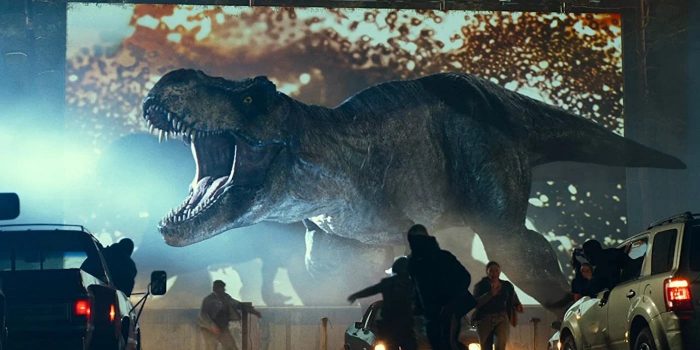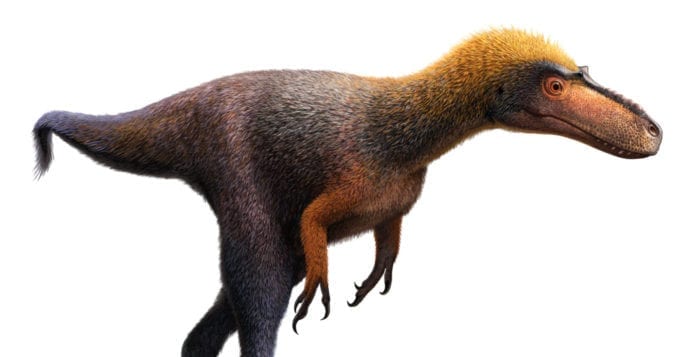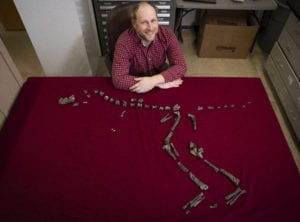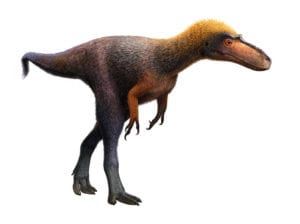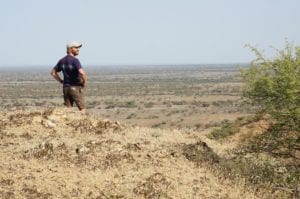Reviewed by Jeffrey Sanzel
The Jurassic Park franchise launched in 1993. Based on the 1990 novel by Michael Crichton, Steven Spielberg directed the film from a screenplay by Crichton and David Koepp. Featuring Sam Neill, Laura Dern, Jeff Goldblum, B.D. Wong, Samuel L. Jackson, and Richard Attenborough, the special-effects packed film became the highest-grossing film released worldwide until that time, besting Spielberg’s E.T. The Extra-Terrestrial (1982). Jurassic Park perfectly combined taut structure, grounded humor, and effective effects.
Spielberg and Koepp returned for The Lost World: Jurassic Park (1997), along with cast members Goldblum and Attenborough, joined by Julianne Moore and Vince Vaughn. The film received mixed reviews but a positive audience response, breaking multiple box office records. Jurassic Park III (2001) was the first without Spielberg as director. And while it brought back Dern and Neill, the film received a predominantly mixed-to-negative response.

Jurassic World: Dominion, directed by Colin Treverrow, reunites cast members from the entire network: Dern, Neill, Goldblum, Wong, Chris Pratt, Bryce Dallas Howard, Omar Sy, Isabella Sermon, Justice Smith, and Daniella Pineda. Rounding out the starry cast are DeWanda Wise, Mamoudou Athie, Campbell Scott, Scott Haze, and Dichen Lachman.
The initial premise is fascinating. A news report explains that following the destruction of the Central American island Isla Nublar, dinosaurs now live among us, always hungry and often violent. The new normal raises ethical questions of accountability and coexistence. These de-extinct animals result from man’s manipulation of science and, therefore, society’s responsibility. Quick cuts of dinosaurs attacking juxtapose with compelling images of these wandering creatures living out of time and place. One powerful clip shows a dinosaur eating garbage next to a train track. Beauty, danger, nobility, and abandonment are all on display.
However, after this brief prologue, the film denigrates into a mess of science fiction and thriller clichés that are hopeless retreads of the first three films. The convoluted machinations include the corrupt Biosyn (sin?) Corporation, Sir Benjamin Lockwood’s cloned granddaughter, biogenetically engineered locusts the size of Dachshunds destroying the food chain, altering DNA and splicing of genomes, black market breeders, and a few other threads not so much woven into the narrative fabric as clumsily stapled.
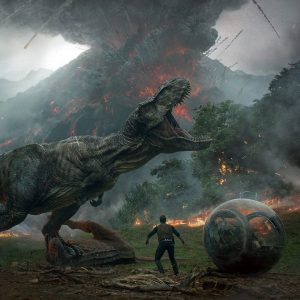
However, with all the plot, there is something ploddingly by the numbers, with one predictable action sequence after another, repetitions of previous Jurassic outings, or pale copies of Indiana Jones. Dominion recalls Godzilla vs. Rodan more than the earlier focused and well-crafted incarnations of the Jurassic universe. Strangely, Dominion nods more to the work of animator Ray Harryhausen and the Sinbad series than to Crichton’s world.
And while strong actors populate the cast, they cannot elevate the stiff dialogue of Emily Carmichael and Colin Trevorrow’s witless screenplay. It is nearly impossible to play multiple notes in a one-dimensional character. Stock outlines substitute for human beings, with everyone talking in breathy, important voices. Fortunately for them, they are mostly directed to look up when they hear dinosaur footsteps. There is lots of running (the people) and chomping (the dinosaurs) and disinterest (the audience).
Dern and Neill give vague performances and are uncomfortable in the cringe-worthy romance awkwardly forced onto their characters. Goldblum’s quirky mannerisms make his Apartments.com commercials appear subtle. Scott plays the corporate villain like Tom Hanks channeling a neurotically twitchy Steve Jobs. Platt and Howard show up. Wise and Athie almost—but not quite—manage to rise above the swamp. As the clone, Maisie, Sermon finds a few more shades than the rest of the company, bringing honesty to the struggle with personal revelations. But these glimpses hardly save the film.
The special effects seem tired, with a ragtag combination of CGI (the locust swarm is particularly unimpressive) and animatronics (basic Disney World). As a result, Dominion feels less blockbuster and more thrill ride without the thrill. Michael Giacchino’s generic score does most of the heavy lifting, with dark chords and lush strings substituting for emotion, style, and actually earned tension.
The final moments of the film return to the movie’s initial potential. But at the end of a bloated two and a half hours, it is far too late. Let’s hope, as with the real dinosaurs, Jurassic World: Dominion marks the extinction of the franchise.
Rated PG-13, the film is now playing in local theaters.

